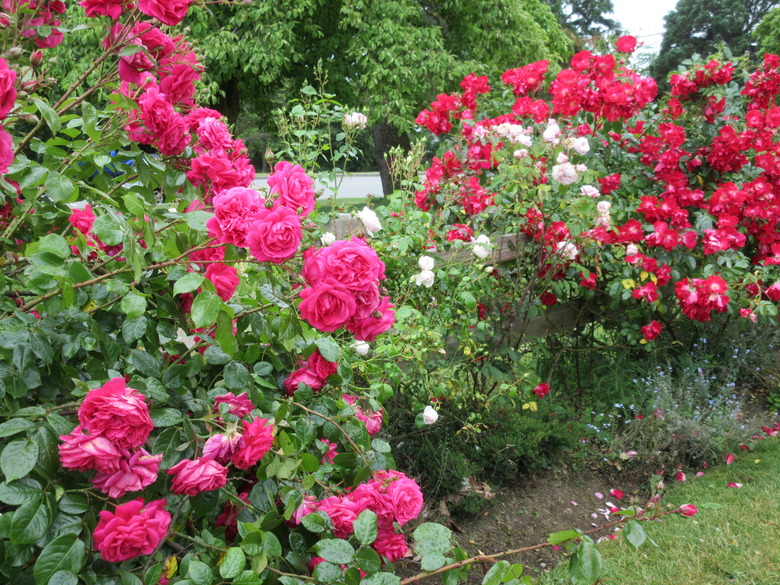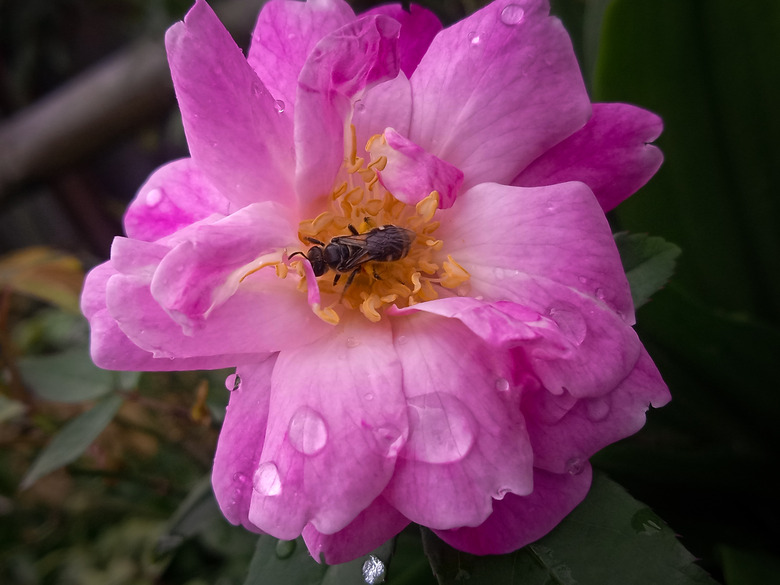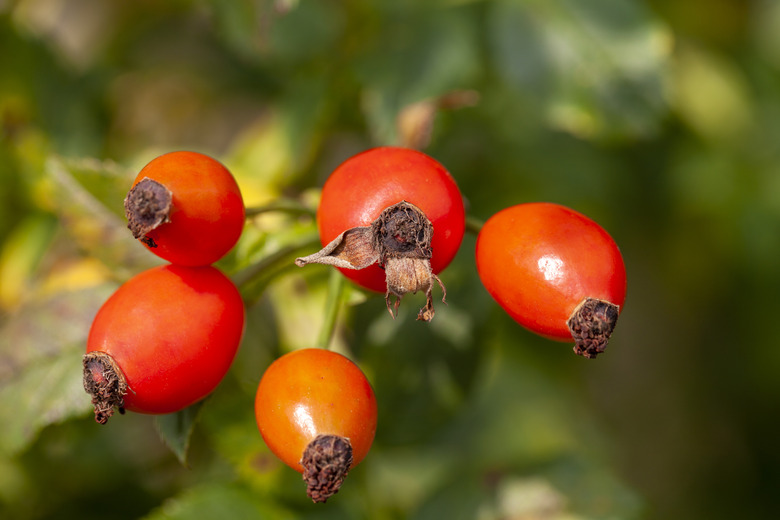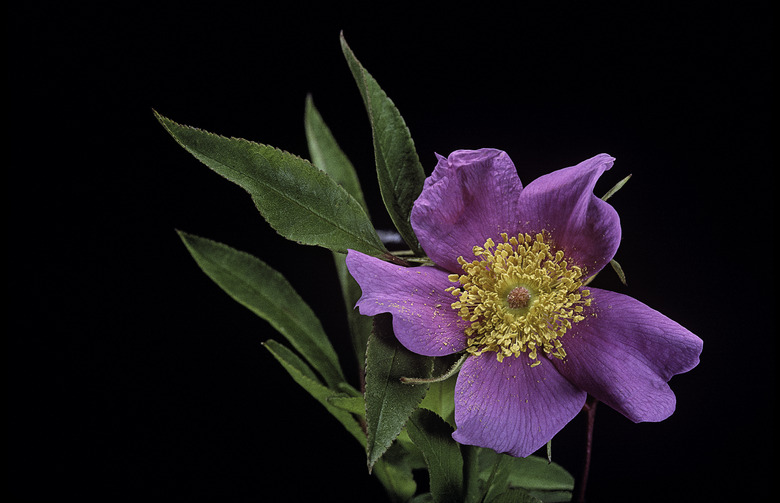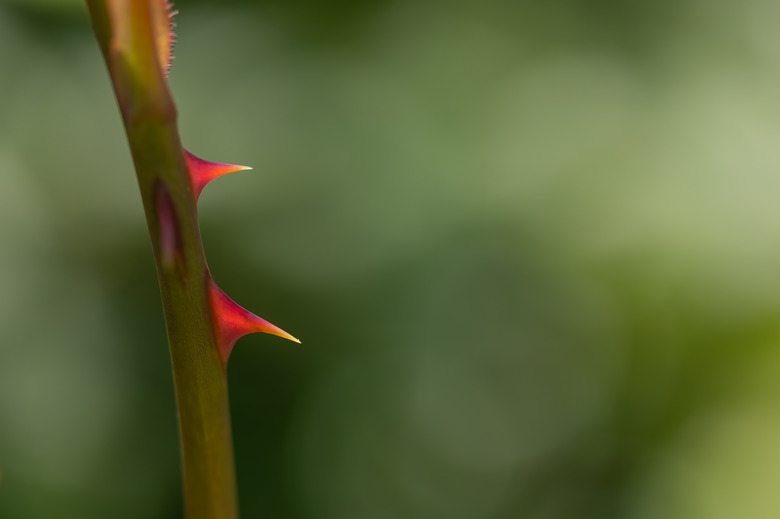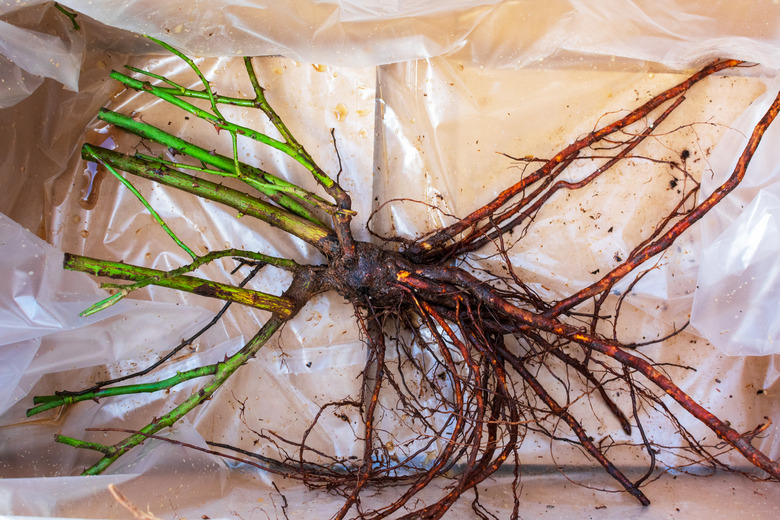What Are The Parts Of A Rose Plant?
Populating 150 species that include a staggering 6,000+ cultivars, it's not surprising that different types of roses exhibit remarkable diversity in size, growth habit, flower form and flower color.
Notwithstanding the sheer numbers of these variations, the parts of a rose are much more easily quantified and identified. Even with vast dissimilarities in size from micro-mini plants with a mature height of 6 to 8 inches, such as Baby Austin (Rosa 'Baby Austin,' USDA zones 5 to 10), to ramblers with 40-foot-long canes, such as Lady Banks rose (Rosa banksiae, zones 6 to 10), individual rose structures are similar.
Flowers and Fruits
Let's first take a look at the delightful flowers and fruits of roses.
Rose Flowers
The most desirable and recognizable feature of rose plants is their flowers. Throughout history, roses have been used for medicinal, military, celebratory, monetary and fragrance purposes. Botanically, however, certain parts of rose flowers serve a reproductive purpose by producing fruits that contain seeds.
Each rose flower has male and female reproductive structures. Bees or other pollinators transfer pollen from the male anther to the female stigma, where it travels down the tube-like style to the ovary.
Rose Fruits
After successful fertilization, rose fruits called "hips" or "haws" form. Fruits are edible and have a tart taste, with a vitamin C content that's higher than citrus fruit (considering equal fruit weights).
Sizes of rose hips vary, from the size of peas to the size of crabapples. They also vary in color from orange to red, and they may be round, oval or teardrop-shaped.
Parts of a Rose Leaf
Plants in the Rosa genus have compound leaves. This means there are multiple leaves attached to each leaf stalk (the petiole) called a leaflet, and this leaflet attaches to the primary stem. In comparison, simple leaves on other plants have single leaves attached to each leaf stalk, which attaches to the primary stem.
Rose leaves are deciduous, with fall color ranging from yellow to golden to red, depending on species and cultivar. Mature leaf colors during the growing season are shades of green, including apple-green, grayish-green and dark-green. On many types of roses, new leaves flush red before turning green.
Most rose leaves are oval-shaped, although there are some variations in this shape, such as swamp rose (Rosa palustris, zones 4 to 9), which has narrow, elliptical leaves that resemble willow foliage.
Rose Stems/Canes
The main stem of a rose (the trunk) as well as the lateral stems (side branches) are called "canes." These parts of a rose plant are highly variable in length, depending on the type of rose. While the trunk of a micro-mini rose may reach only 6 inches in height, ramblers and climbers have canes that can grow 20 to 40 feet long.
Some rose canes are thornless, although most types of roses have sharp "thorns," which correctly are called "prickles." Thorns are actually sharp, modified stems, but prickles are sharp, modified plant hairs. Thorns are found just above leaves or leaf buds, but prickles are found all along the stems.
It's important to note that thorn"less" doesn't mean thorn"-free," so even thornless roses may sport the occasional thorn/prickle. Watch out for these as you're cutting flowers or pruning plants, because they may lurk on the canes of a rose that you purchased as a "thornless" cultivar.
Warning
Note that thorn"less" doesn't mean thorn"-free," so even thornless roses may sport the occasional thorn/prickle.
Rose Crown and Graft/Bud Union
Now let's take a closer look at the crown and graft unions.
Crown
The crown is the rose structure that produces shoots above it and roots below it. Sitting at or slightly above the soil line, a rose's crown properly positioned when planting can make or break the health of a plant.
If the crown is buried too deeply when planting a rose, the plant can succumb to a fungal disease called crown rot.
Graft/Bud Union
Most modern-day roses are grafted, which means that the top growth of one type of rose is joined to the rootstock of another type. If a rose is grafted, there will be a knobby growth on the trunk where the graft was made, called the graft union or bud union.
Generally, the graft union will be close to soil level; however, the graft union on tree roses will be further up the trunk and close to where the plant begins to branch and flower.
Shoots produce above the graft union will flower according to the picture and/or description on the plant label or packaging. Any shoots that grow below the graft union will be part of the rootstock and should be removed, because flowers they produce will not be those of the labeled cultivar.
Root Systems of Roses
The unseen but all-important parts of the rose plants are their root systems. Roses have fibrous root systems, which spread out underground in all directions around the plants.
Some types of roses also develop a taproot, which can vary in depth to several feet below the plant. Roses that are grafted onto Fortuniana rootstocks may grow taproots 4 feet long. Even the fibrous roots on this type of rootstock are more prolific than other types of rootstocks.
The benefits of growing roses grafted onto a tough rootstock like this one are improved disease resistance, improved cold hardiness and larger flowers.
References
- University of Illinois Extension: Our Rose Garden
- University of Georgia Extension: Roses in Georgia – Selecting and Growing Techniques
- Kansas State University Research and Extension: Growing Miniature Roses
- Rice University: Willinators Roses
- North Carolina State Extension: Rosa Banksiae
- University of Idaho Extension: Rose Hips
- North Carolina State Extension: Rosa Palustris
- North Carolina State Extension: Defense
- Mississippi State University Extension: Growing Roses on Fortuniana Rootstock
